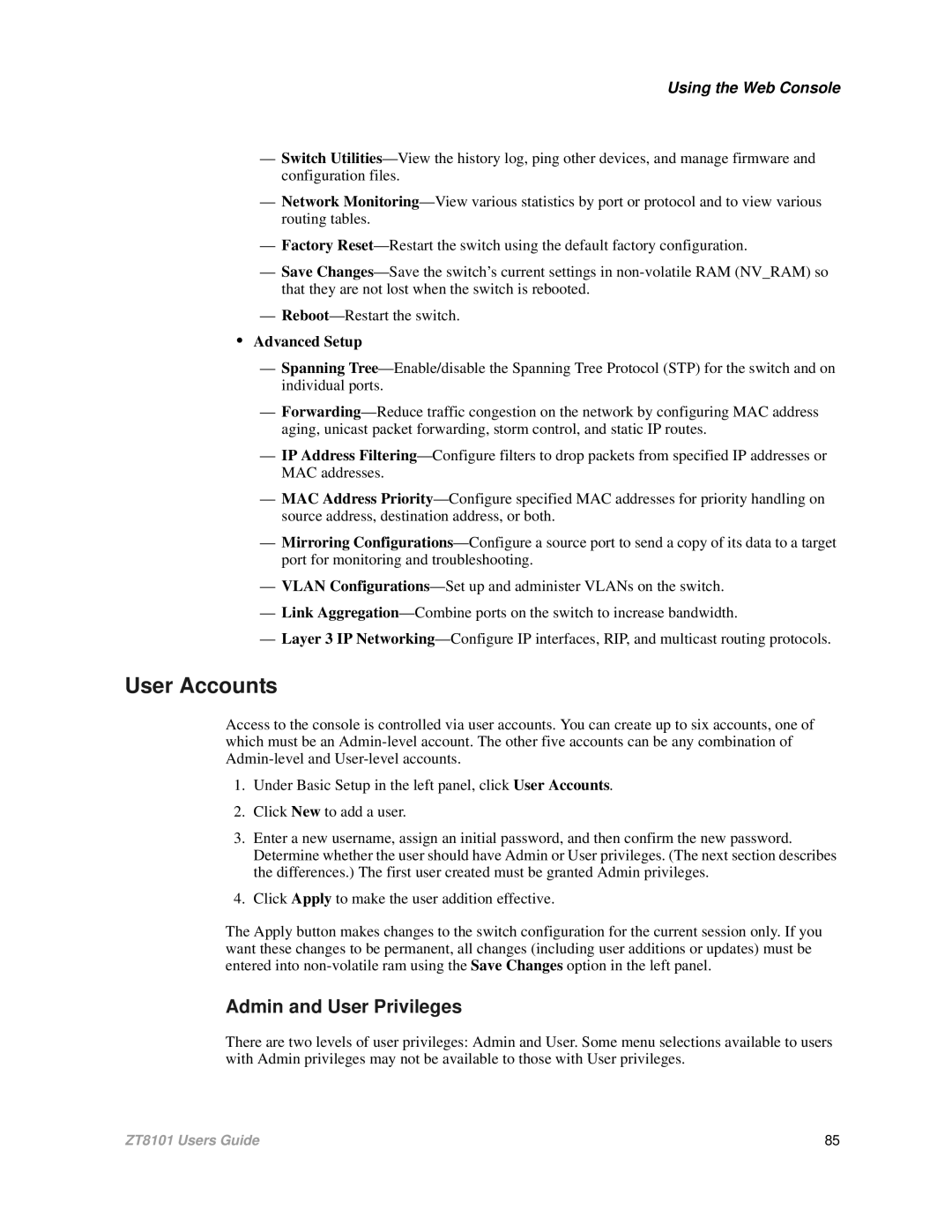Using the Web Console
—Switch Utilities—View the history log, ping other devices, and manage firmware and configuration files.
—Network Monitoring—View various statistics by port or protocol and to view various routing tables.
—Factory Reset—Restart the switch using the default factory configuration.
—Save Changes—Save the switch’s current settings in non-volatile RAM (NV_RAM) so that they are not lost when the switch is rebooted.
—Reboot—Restart the switch.
•Advanced Setup
—Spanning Tree—Enable/disable the Spanning Tree Protocol (STP) for the switch and on individual ports.
—Forwarding—Reduce traffic congestion on the network by configuring MAC address aging, unicast packet forwarding, storm control, and static IP routes.
—IP Address Filtering—Configure filters to drop packets from specified IP addresses or MAC addresses.
—MAC Address Priority—Configure specified MAC addresses for priority handling on source address, destination address, or both.
—Mirroring Configurations—Configure a source port to send a copy of its data to a target port for monitoring and troubleshooting.
—VLAN Configurations—Set up and administer VLANs on the switch.
—Link Aggregation—Combine ports on the switch to increase bandwidth.
—Layer 3 IP Networking—Configure IP interfaces, RIP, and multicast routing protocols.
User Accounts
Access to the console is controlled via user accounts. You can create up to six accounts, one of which must be an Admin-level account. The other five accounts can be any combination of Admin-level and User-level accounts.
1.Under Basic Setup in the left panel, click User Accounts.
2.Click New to add a user.
3.Enter a new username, assign an initial password, and then confirm the new password. Determine whether the user should have Admin or User privileges. (The next section describes the differences.) The first user created must be granted Admin privileges.
4.Click Apply to make the user addition effective.
The Apply button makes changes to the switch configuration for the current session only. If you want these changes to be permanent, all changes (including user additions or updates) must be entered into non-volatile ram using the Save Changes option in the left panel.
Admin and User Privileges
There are two levels of user privileges: Admin and User. Some menu selections available to users with Admin privileges may not be available to those with User privileges.
